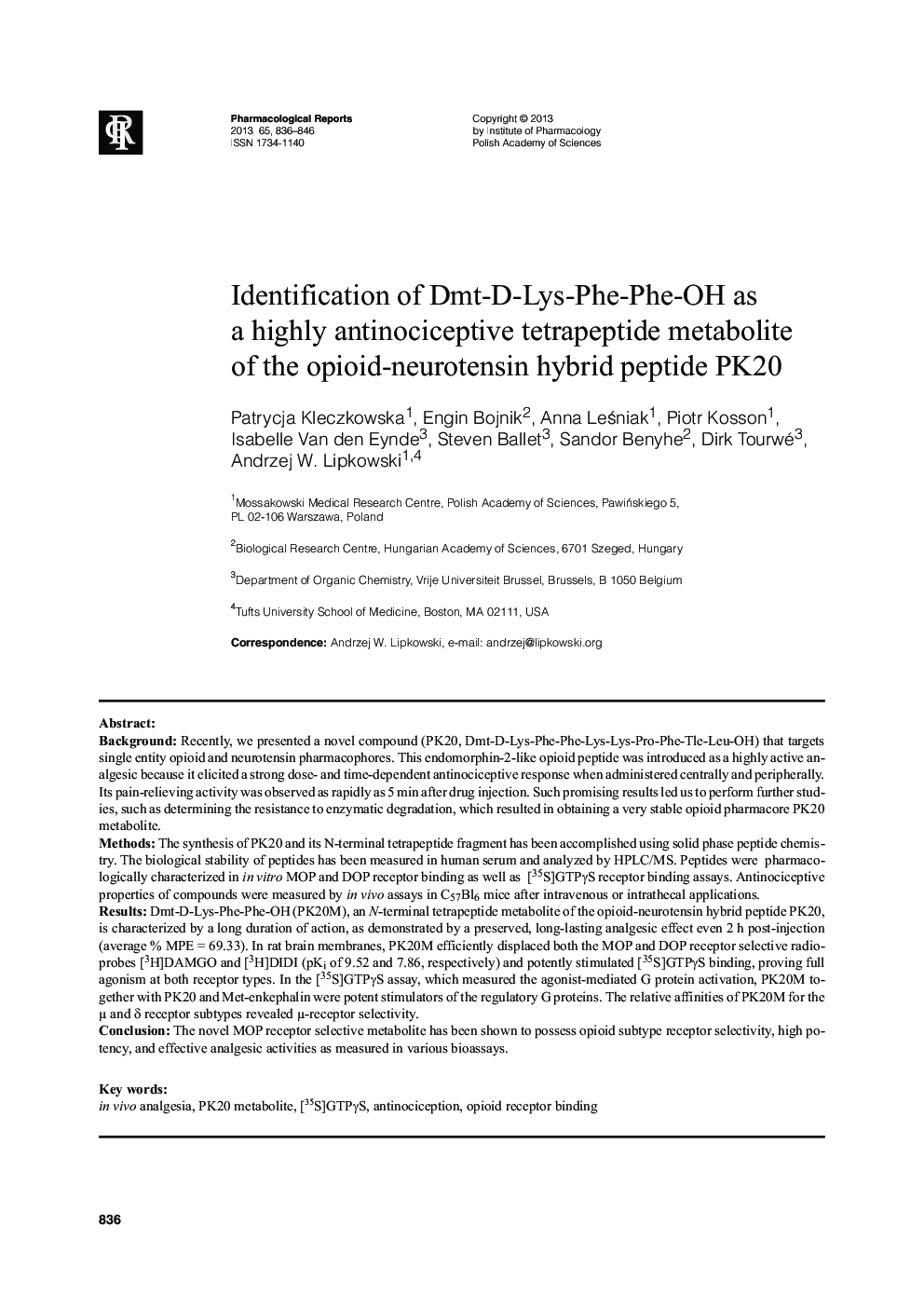| Article ID | Journal | Published Year | Pages | File Type |
|---|---|---|---|---|
| 2011335 | Pharmacological Reports | 2013 | 11 Pages |
BackgroundRecently, we presented a novel compound (PK20, Dmt-D-Lys-Phe-Phe-Lys-Lys-Pro-Phe-Tle-Leu-OH) that targets single entity opioid and neurotensin pharmacophores. This endomorphin-2-like opioid peptide was introduced as a highly active analgesic because it elicited a strong dose- and time-dependent antinociceptive response when administered centrally and peripherally. Its pain-relieving activity was observed as rapidly as 5 min after drug injection. Such promising results led us to perform further studies, such as determining the resistance to enzymatic degradation, which resulted in obtaining a very stable opioid pharmacore PK20 metabolite.MethodsThe synthesis of PK20 and its N-terminal tetrapeptide fragment has been accomplished using solid phase peptide chemistry. The biological stability of peptides has been measured in human serum and analyzed by HPLC/MS. Peptides were pharmacologically characterized in in vitro MOP and DOP receptor binding as well as [35S]GTPγS receptor binding assays. Antinociceptive properties of compounds were measured by in vivo assays in C57Bl6 mice after intravenous or intrathecal applications.ResultsDmt-D-Lys-Phe-Phe-OH (PK20M), an N-terminal tetrapeptide metabolite of the opioid-neurotensin hybrid peptide PK20, is characterized by a long duration of action, as demonstrated by a preserved, long-lasting analgesic effect even 2 h post-injection (average % MPE = 69.33). In rat brain membranes, PK20M efficiently displaced both the MOP and DOP receptor selective radioprobes [3H]DAMGO and [3H]DIDI (pKi of 9.52 and 7.86, respectively) and potently stimulated [35S]GTPγS binding, proving full agonism at both receptor types. In the [35S]GTPγS assay, which measured the agonist-mediated G protein activation, PK20M together with PK20 and Met-enkephalin were potent stimulators of the regulatory G proteins. The relative affinities of PK20M for the μ and δ receptor subtypes revealed μ-receptor selectivity.ConclusionThe novel MOP receptor selective metabolite has been shown to possess opioid subtype receptor selectivity, high potency, and effective analgesic activities as measured in various bioassays.
